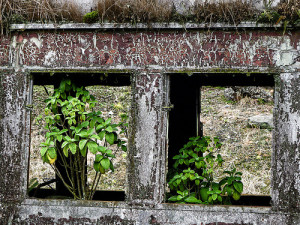 Windows are an extremely beautiful part of our homes.
Windows are an extremely beautiful part of our homes.
Not only do they add to the aesthetic appeal of a house, but they are functional in keeping what’s inside, inside, and keeping what’s outside, outside.
If you want your windows to stay as beautiful as the day you got them, you’ll need to do some basic maintenance throughout the life of your home. One of the most important things you can do is check for window rot.
Help! Why Is There Excessive Moisture Between My Window Panes?
If you’ve noticed excessive moisture on your windows, you’re likely wondering why is there moisture between the panes of your windows? Condensation between window panes often indicates that the seal has failed, allowing moisture to seep in. This not only impacts the efficiency of your windows but can also lead to more severe issues like wood rot if left unaddressed. Over time, this trapped moisture can damage the window frame, compromising the integrity of your windows and potentially leading to costly repairs.
Whereas new, clean wood feels dense and hard, rotted wood has a very different feel. Rotted wood is soft and spongy. In terms of window rot, the basic structure of a window can be broken down into several key parts to examine:
How to Check Outside Trim and Brick for Mold
First we have the outside trim, which covers the outside layer of the window and your home. You can think of the window molding as a kind of bumper or extra protection for the windowsill and frame.
Through not as serious of a problem as if your window frame or sill were to rot, rotting trim can be a sign that your windowsill and frame have rot. On top of that, rotting brick mold can also lead to structural damage of your home, since water may be leaking in through the cracks of the trim.
Luckily, fixing the outside trim isn’t super difficult, and any handy homeowner can take a crack at it. To replace, remove the rotten trim and have it replaced with new matching trim. Although it is recommended that you have a saw to cut the trim to size, you can have your local hardware store do it for you.
How to Identify Windowsill Rot
Now, we get into the tricky stuff. The second area you have to worry about is the windowsill, which is the piece of wood at the bottom of the window. If this area starts to rot, water can seep down into your wall and not only cause mold and water damage to the wall (an expensive fix), but also electrical problems by damaging the wiring located behind the wall.
To check, push down on the sill. If it cracks, moves, or in any way feels like it has give, then you will most likely need to fix this.
This is where the tricky part comes in. Depending on how far the rotting goes into the wall, you can cut it out and attach a new piece of wood to replace the rotten part of the sill. But, if the rot goes far into the sill and into the frame, then you have a bigger problem on your hands.
How to Identify Window Frame Rot
Which leads us to our next part: the window frame. Fixing the window frame can be very difficult. While you can replace the first 1-2 inches on the outside of the frame, any further and you end up getting into the structure of the window. At this point, you’ll likely have to replace the frame or entire window.
Other Things to Consider When Checking for Window Rot
Finally, you’ll want to look at the sash. The window sash is the actual window itself (the part you move up and down to open the window). There are typically two to a window. If there is any rot, window replacement is highly recommended.
Our biggest advice is to check your windows once or twice a year. Window wood rot is more serious than you might think, and we recommend checking when spring rolls around. During this time of year, the snow begins to melt and rain becomes more of an issue. Fall is also a good time to check. Look out for any standing water or buildup of snow on the sill, and don’t be afraid to poke and prod at your window. If the wood feels mushy or spongy, you’ve got rot.
As always, if you have any questions or would like to know more about what Omaha Door & Window has to offer, please don’t hesitate to reach out to us via our website’s Contact us page, or get a Free Estimate. We’d love to help out! We’re also available on Facebook and on Twitter @OmahaDoor.
—
photo credit: There’s life in a dead train via photopin (license)
